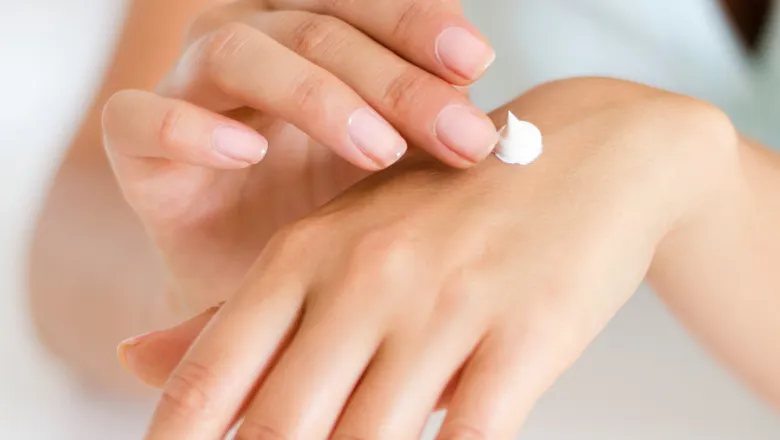30 August 2019
Skin creams aren't what we thought they were
In a world-first, King’s researchers have determined how aqueous creams are structured at the molecular level.

The research presented at the American Chemical Society meeting in San Diego, described the structure of aqueous creams and how previous assumptions about these structures has been incorrect.
Aqueous creams are emulsions oil and water and are widely used in cosmetics. They typically contain a few standard ingredients including preservatives for antimicrobial effect. However, little is known about how these components interact to influence the performance of the product.
In research performed by PhD student Delaram Ahmadi, (School of Cancer & Pharmaceutical Sciences) results were presented of a structure of a cream to an unpresented level of detail. Using the technique of small angle neutron scattering, the team determined how the ingredients were dispersed throughout the cream. They found that several assumptions of cream structure had been inaccurate.
“The long-term stability and clinical properties of a cream are determined by its fundamental structure. If we can understand the chemical microstructure of the cream and relate that to the structure of the skin, then perhaps we can better repair the compromised skin barrier.” – Delaram Ahmadi, preseting author of the study.
“We wanted to improve the science around cream formulation so that companies could more rationally formulate them to get exactly what they want. The most significant thing we found is that the textbook picture of the structure of a cream is very naïve.” – Dr David Barlow, School of Cancer & Pharmaceutical Sciences.
To reveal a cream’s true structure, the researchers started with an aqueous cream formulation and one by one, they determined the location of each ingredient within the cream.
In a surprising result, the preservative ingredient was not found in the water in the cream where scientists have always presumed it would be and in other studies they also found that the cream containing no preservative was equally effective in preventing microbial growth.This could mean that the creams are potentially self-preserving.
The team is currently performing computer experiments to model the cream structure and aim to better understand how the preservative molecules are arranged in the cream, and they also aim to model the structures of other types of creams.
Watch ACS press conference here.
The neutron experiments were performed at the STFC Rutherford Appleton ISIS facility and the research was supported and funded by GlaxoSmithKline and the U.K. Engineering and Physical Sciences Research Council.
